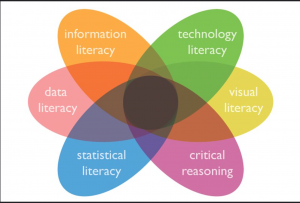Have you ever been on a website, seen an item you wanted to read, and then were then asked to pay for that privilege? By design, a paywall protects the value of intellectual property and prevents unauthorized sharing. It’s also a way for publishers and content aggregators to generate revenue. This business model in which the user pays for news or information limits access to individuals who can afford to purchase materials.
There are strategies for getting around paywalls, the chief of which is Interlibrary Loan (ILL). If you encounter a request for payment to view or download an article or book chapter, complete the form on the NOVA website. Your ILL librarian will consult other libraries to obtain a copy for you.
Communities share
Researchers can also consult academic communities to determine whether an article or book chapter is available. Use your NOVA credentials to register with Academia.edu, ResearchGate.net, or Faculty of 1000. The author may have already made that item available to community members. If not, you can send a message through the community site to request the item from the author.
Pirate sites and shadow libraries to avoid
Alongside the legal sharing of digital content, a network exists that is intent on making copyrighted content freely available, even if that infringes on the copyright owner’s rights. Shadow libraries, such as Sci-Hub, Z-Library (formerly BookFinder), and Library Genesis (LibGen), should be avoided at all costs.
Tools can help
Several browser-based extensions intelligently use open web search to connect researchers to content. Some popular and affordable tools for bypassing paywalls using ethical means include the following:
BrowZine is a digital magazine shelf for academic journals. Users can browse, read, save, and monitor scholarly journals in 14 disciplines. On the initial screen, select Use Open Access Library. The tool will search for a copy of the article in an open repository. (See the June 2024 blog, “How to take advantage of ‘open access’,“ to learn more about open repositories.)
EndNote Click, a browser extension, searches subject and institutional repositories to locate the best available PDF of an article. When you encounter a paywalled article, click the purple button at the lower left of the screen to download the full text. If you register with EndNote Click, you can “Save to My Locker.”
GetFTR facilitates access to articles or book chapters by checking permissions with publishers and returning links to open access, free, and items you are entitled to view due to a subscription. One of the newest features of GetFTR is the flagging of retracted materials and erroneous information.
Lazy Scholar is a browser extension that finds free full-text scholarly material in open repositories, including Google Scholar and PubMed.
Open Access Button “provides free access to papers legally by scouring the web and emailing authors. Use it on the website, via plugins for Chrome and Firefox.”
Open Access Helper, a browser-based extension, helps users find access to articles. When encountering a Digital Object Identifier (DOI), Open Access Helper queries open repositories to obtain a copy. If none is available, Open Access Helper guides users to their institution’s link resolver and provides remote access to library-based subscriptions.
Unpaywall is a browser extension that uncovers free versions of paywalled papers. It harvests open-access content from “over 50,000 unique online content hosting locations, including Gold OA journals, Hybrid journals, institutional repositories, and disciplinary repositories.”
These tools offer effective paywall workarounds. Try one!




